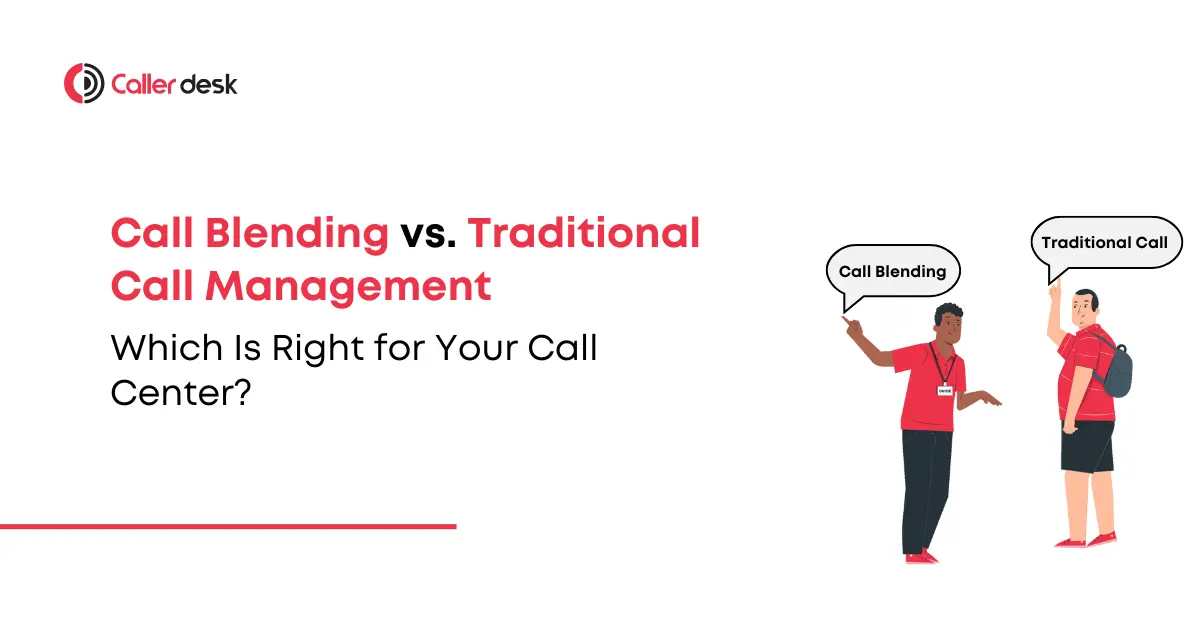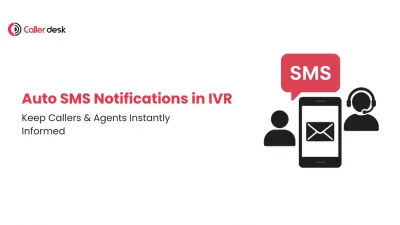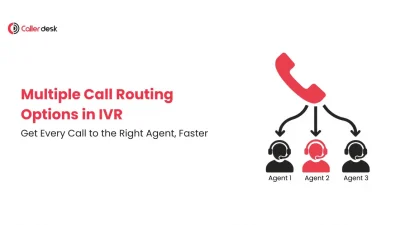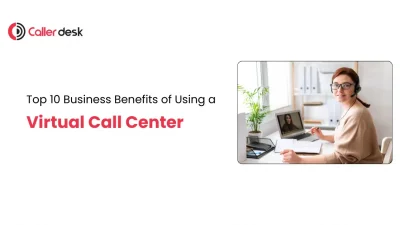Efficient call handling is the cornerstone of a successful call center. Whether managing inbound calls from customers seeking support or outbound calls aimed at generating sales, a well-structured system can significantly impact productivity, customer satisfaction, and overall business growth.
But when it comes to choosing the right system, businesses are often torn between two approaches: call blending and traditional call management.
- Call Blending: A modern solution that unifies inbound and outbound call handling within a single platform, allowing agents to seamlessly switch between tasks.
- Traditional Call Management: A more segmented approach, where inbound and outbound calls are managed separately, often requiring distinct systems and teams.
Both approaches have their merits, but the best choice depends on your call center’s unique needs, goals, and operational structure. Let’s dive deeper into how these systems work, their differences, and how they can impact your call center’s performance.
What is Call Blending?
Call blending integrates inbound and outbound call handling into a single, unified system. Using advanced tools like Automatic Call Distribution (ACD) and predictive dialing, it dynamically routes calls to available agents based on real-time demand.
For instance:
- During peak inbound hours, agents focus on resolving customer queries.
- During quieter periods, they shift to outbound tasks like follow-ups, sales calls, or customer surveys.
This dynamic allocation ensures that agents remain productive at all times, reducing idle time and improving customer service.
What is Traditional Call Management?
Traditional call management separates inbound and outbound operations. Agents or teams are often assigned specific roles:
- Inbound Team: Handles incoming customer inquiries, complaints, or support requests using ACD systems.
- Outbound Team: Focuses on sales, marketing, or follow-up calls, often using manual or preview dialing systems.
While this approach works for some businesses, it can create operational silos, leading to inefficiencies, higher costs, and inconsistent customer experiences.
Key Differences Between Call Blending and Traditional Call Management
1. Call Handling
- Call Blending: Calls are dynamically distributed among agents based on availability and skill. Agents handle a mix of inbound and outbound tasks, ensuring no downtime.
- Traditional Call Management: Separate teams and systems handle inbound and outbound calls, leading to potential delays or idle periods during slow call volumes.
2. Efficiency
- Call Blending: Optimizes agent productivity by minimizing idle time and keeping agents engaged with real-time call allocation.
- Traditional Call Management: May result in inefficiencies, as agents handling only inbound or outbound tasks may have periods of inactivity.
3. Customer Experience
- Call Blending: Shorter wait times, seamless service, and personalized interactions (thanks to CRM integration) enhance the overall customer experience.
- Traditional Call Management: The lack of integration between inbound and outbound systems can lead to longer wait times and a less cohesive customer journey.
4. Cost-Effectiveness
- Call Blending: A single system reduces infrastructure costs and eliminates the need for separate teams or tools for inbound and outbound operations.
- Traditional Call Management: Requires investment in separate solutions for inbound and outbound tasks, increasing costs and complexity.
5. Scalability and Flexibility
- Call Blending: Easily adapts to changing call volumes or business needs, making it ideal for growing companies.
- Traditional Call Management: Less flexible, with limited options for scaling or adapting to dynamic call environments.
Benefits of Call Blending
1. Increased Productivity
Call blending ensures agents are always engaged, whether handling customer queries or generating sales leads. By reducing idle time, it maximizes the value of every working hour.
2. Enhanced Customer Satisfaction
With shorter wait times and more personalized service, customers enjoy a smoother experience. Integrated CRM tools give agents instant access to customer histories, enabling faster resolutions.
3. Revenue Growth
Call blending creates more opportunities for upselling and cross-selling. For example, an agent resolving a support ticket can suggest complementary products, turning support calls into revenue-generating opportunities.
4. Cost Savings
A unified system eliminates the need for separate infrastructure, reducing costs and simplifying operations.
5. Real-Time Insights
Advanced analytics provide valuable insights into agent performance, customer behavior, and call trends, enabling data-driven decisions.
Challenges of Traditional Call Management
While traditional systems have their place, they often come with limitations:
- Inefficiency: Separate systems can lead to increased downtime for agents.
- Higher Costs: Investing in separate tools for inbound and outbound operations can strain budgets.
- Limited Flexibility: Adapting to fluctuating call volumes or integrating new communication channels is challenging.
Which System is Right for Your Call Center?
Choose Call Blending If:
- Your business handles both inbound support and outbound sales or follow-ups.
- Reducing agent downtime and maximizing productivity are top priorities.
- You need a system that integrates seamlessly with CRM tools and supports omnichannel interactions.
- Enhancing customer satisfaction with faster response times and personalized service is crucial.
Choose Traditional Call Management If:
- Your operations focus exclusively on inbound or outbound calls.
- You prefer a simpler setup without advanced features like predictive dialing or omnichannel integration.
- Your business has a static call volume and doesn’t require real-time adjustments.
Why Choose CallerDesk for Call Blending?
CallerDesk offers an advanced call blending solution that addresses the challenges of traditional call management while delivering unparalleled benefits:
Unique Features:
- AI-Powered Call Routing: Automatically connects customers to the best-suited agents.
- Omnichannel Support: Manage customer interactions across voice, email, SMS, and social media from a single platform.
- Predictive Dialing: Boost outbound efficiency by dialing multiple numbers and connecting agents only to answered calls.
- Real-Time Analytics: Gain actionable insights into agent performance and customer interactions.
- Scalability: Easily expand operations as your business grows.
Conclusion
Choosing between call blending and traditional call management depends on your call center’s unique requirements. While traditional systems may suit simpler operations, call blending offers the flexibility, efficiency, and scalability needed for modern businesses.
Ready to transform your call center? CallerDesk’s advanced call blending solution can help you streamline operations, enhance customer experiences, and drive revenue growth—all from a single platform.
👉 Schedule a free demo today and discover how CallerDesk can revolutionize your call center operations!
Frequently asked questions
1. What is call blending, and how does it work?
Call blending is a strategy where agents manage both inbound (customer support) and outbound (sales or follow-ups) calls within a unified system. The software dynamically routes calls based on demand, ensuring efficient use of agent time and providing a seamless customer experience.
2. What are the main benefits of call blending?
Call blending improves agent productivity, reduces idle time, enhances customer satisfaction, and offers cost efficiency by consolidating inbound and outbound operations into a single platform.
3. How does traditional call management differ from call blending?
Traditional call management separates inbound and outbound call handling into distinct systems or teams, often leading to inefficiencies. In contrast, call blending unifies these processes for smoother operations and better resource utilization.
4. Can call blending integrate with CRM software?
Yes, call blending integrates seamlessly with CRM software, providing agents with real-time customer data to personalize interactions and resolve issues efficiently.
5. Is call blending suitable for small businesses?
Absolutely. Call blending is cost-effective, enhances productivity, and improves customer satisfaction, making it a great option for small businesses seeking to optimize their call center operations.
6. What are the challenges of traditional call management?
Traditional call management can result in agent downtime, longer customer wait times, and less flexibility due to separate systems for handling inbound and outbound calls.
7. How can CallerDesk help with call blending?
CallerDesk provides a robust call blending solution with features like automatic call distribution, predictive dialing, and real-time analytics, ensuring seamless integration of inbound and outbound calls for maximum efficiency.
8. What industries benefit most from call blending?
Call blending is highly beneficial for industries like e-commerce, healthcare, banking, and telecommunications, where businesses handle both customer inquiries and sales calls.
9. Is call blending cost-effective compared to traditional call management?
Yes, call blending reduces the need for multiple systems, lowers operational costs, and optimizes agent utilization, making it more cost-effective in the long run.
10. How can I get started with a call blending system?
To implement call blending, choose a reliable platform like CallerDesk, which offers seamless integration, advanced features, and excellent customer support. Schedule a free demo to explore its benefits.





